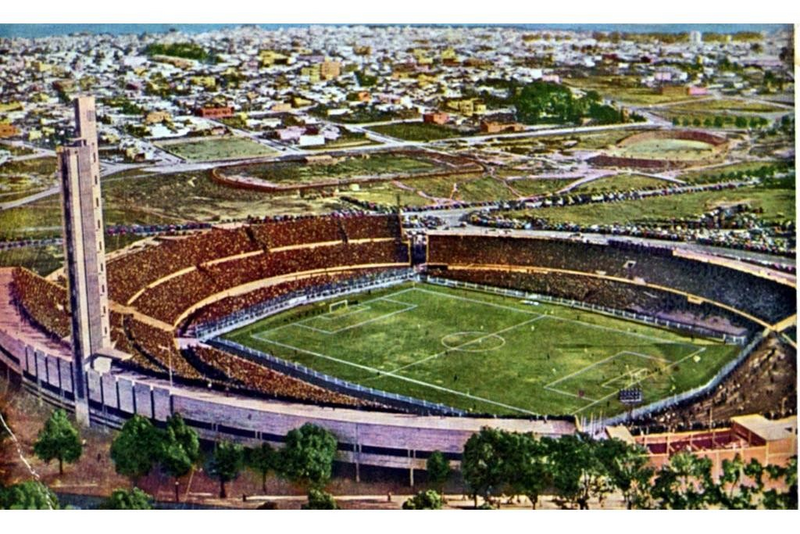The Asociacion Uruguaya de Futbol (AUF) was founded on 30 March 1900
The men’s national team has two FIFA World Cup wins to its name
Many global stars have worn the Celeste jersey over the years
📝 Origins
On 30 March 1900, the Uruguayan football association (Asociacion Uruguaya de Futbol or AUF) was founded by the Albion Football Club, the Central Uruguay Railway Cricket Club (CURCC), the Deutscher Fussball Klub and the Uruguay Athletic Club, at the behest of Enrique Candido Lichtemberger, one of the driving forces at Albion.
The first president of the AUF was Pedro Charter from CURCC, with the initial headquarters being near to Montevideo’s port area at Calle Solis 15, in the offices of the El Siglo insurance company where Lichtemberger was the main shareholder. In later years, the headquarters moved on a number of occasions but always remained within the capital’s old town.
The association has been a member of CONMEBOL since 1916, which it founded along with its counterparts from Argentina, Brazil and Chile. Since 1923 it has also been part of FIFA. Ignacio Alonso is the current president of the AUF, having taken on the office in 2019.
🏆 Football in Uruguay – a success story
Football is the most popular sport in Uruguay among players and fans alike, both on an amateur level – on local pitches in school and district clubs – and a professional one. The country has also enjoyed its greatest sporting successes on the football field.
Uruguay took the gold medal at the Men's Olympic Football Tournaments in 1924 in Paris and 1928 in Amsterdam, which counted as world championships at the time. These victories saw the country chosen to host the first ever FIFA World Cup™ which was held in 1930, and they went on to win that inaugural competition, defeating neighbours Argentina 4-2 to take the title.
Twenty years later, La Celeste pulled off one of the greatest results in footballing history in what has come to be known as the Maracanazo. At the 1950 FIFA World Cup, hosts Brazil cruised through the tournament, inflicting defeat after defeat on their opponents and looked all set to win their first ever title. All the Seleção needed was a draw in their last match of the final round to secure the Jules Rimet trophy.
Their Uruguayan neighbours had other plans, however. Two hundred thousands fans – maybe more – witnessed the “Agony of the Maracana” as Uruguay came from behind, drew level and then went 2-1 up thanks to a goal from Alcides Ghiggia which ultimately gave La Celeste their second World Cup win.
Only three people have ever been able to silence the Maracana: the Pope, Frank Sinatra and me.
On a continental level, Uruguay is the most successful country in Copa America history with 15 titles, while its top clubs – Penarol and Nacional Montevideo – have eight Copa Libertadores and six Intercontinental Cup wins between them, the latter tournament being the forerunner of the current FIFA Club World Cup.
Women’s football has been played in organised form since 1996. The AUF currently runs a first division with seven clubs, a second division with eight clubs, and two more at U-19 and U-16 levels (with ten clubs each). Some 2,000 players are involved in these four competitions.
The greatest success to date for one of the women’s national teams was when the U-17s finished runners-up in the 2012 South American championships, which qualified them for the FIFA U-17 Women’s World Cup Azerbaijan later that year. Unfortunately Uruguay did not make it past the group stage there.
The FIFA U-17 Women’s World Cup 2018 was the first World Cup to be held in Uruguay since 1930.
⚽ Leading players and coaches
Uruguayan football has provided world-class footballers across every generation, from Juan Schiaffino and Alcides Ghiggia through to the likes of Diego Forlan, Diego Godin, Luis Suarez and Edinson Cavani more recently.
There is also a coach who wrote his own chapter in Uruguayan footballing history. Seventy-three-year-old Oscar Tabarez was initially in charge of the national team over a two-year period, taking them to the 1989 Copa America and the 1990 World Cup.
"El Maestro" – the teacher, as Tabarez was known since he was a primary school teacher during his playing days as a defender – then returned to club football and was named coach of Boca Juniors in Argentina, who he steered to a league and a cup title. After that he headed over to Europe, where he coached Cagliari and AC Milan in Italy and Real Oviedo in Spain, before another period in Argentina at the helm of Velez Sarsfield and then Boca once again.
He had another stint with Uruguay from 2006, overseeing the team four times at the Copa America and winning it in 2011. Under his auspices, Uruguay qualified for three World Cups (2010, 2014, 2018), finishing fourth in the first of those in South Africa. He also took them to the FIFA Confederations Cup in 2013 and the Men’s Olympic Football Tournament in London in 2012.
Uruguay: Historic players
🏟 The national stadium
The Estadio Centenario in Montevideo is a symbol of the bridge between the past and the present in world footballing terms. It is a monument to South America’s love of sport - a veritable concrete colosseum that can host 100,000 fans and which was the main venue for the first ever World Cup, when it became clear to everyone around the world that football was the one true global sport.
The stadium’s name is also testament to the fact that is was built not solely for the World Cup, but also to celebrate the 100th anniversary of Uruguay’s independence, making it both a milestone in footballing architecture and a symbol of national identification.
